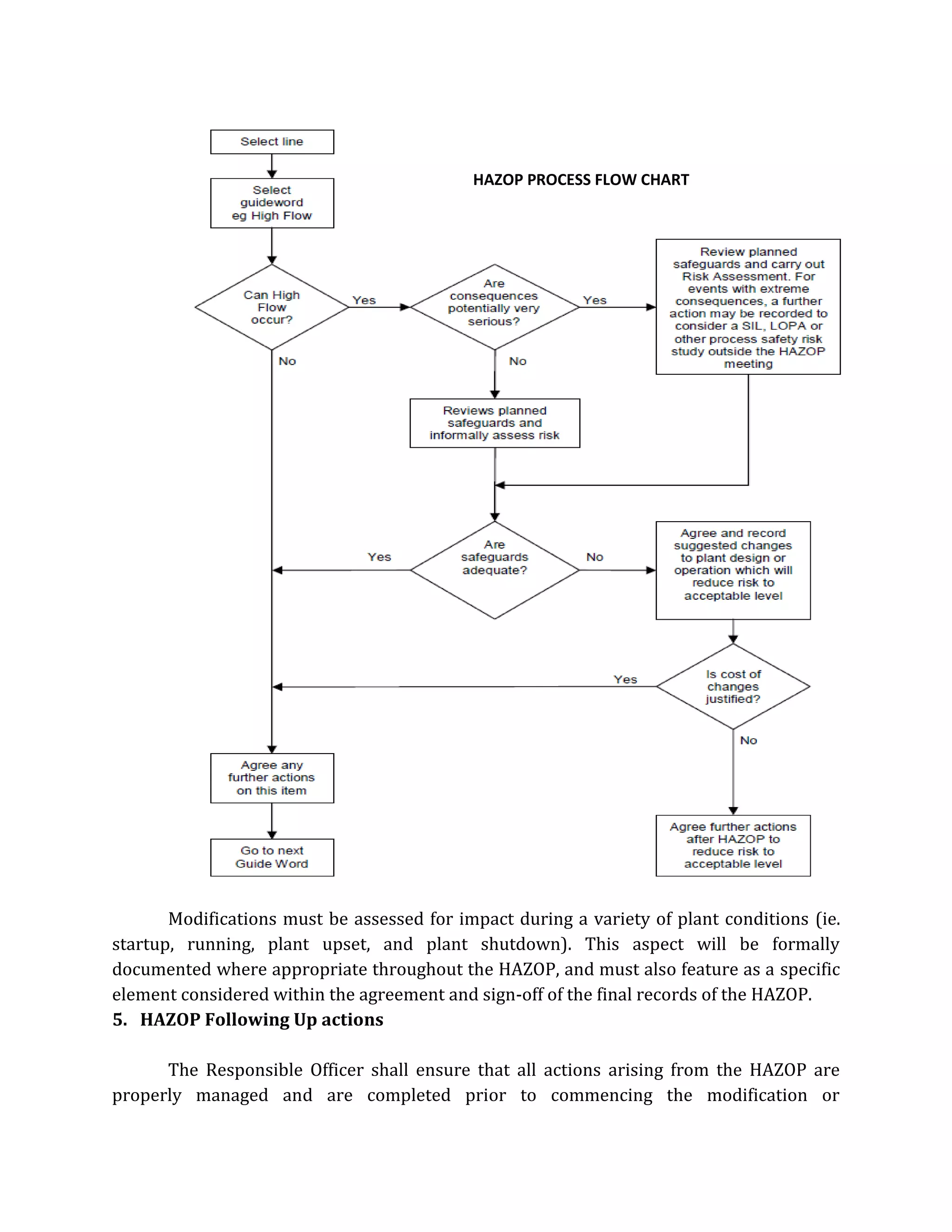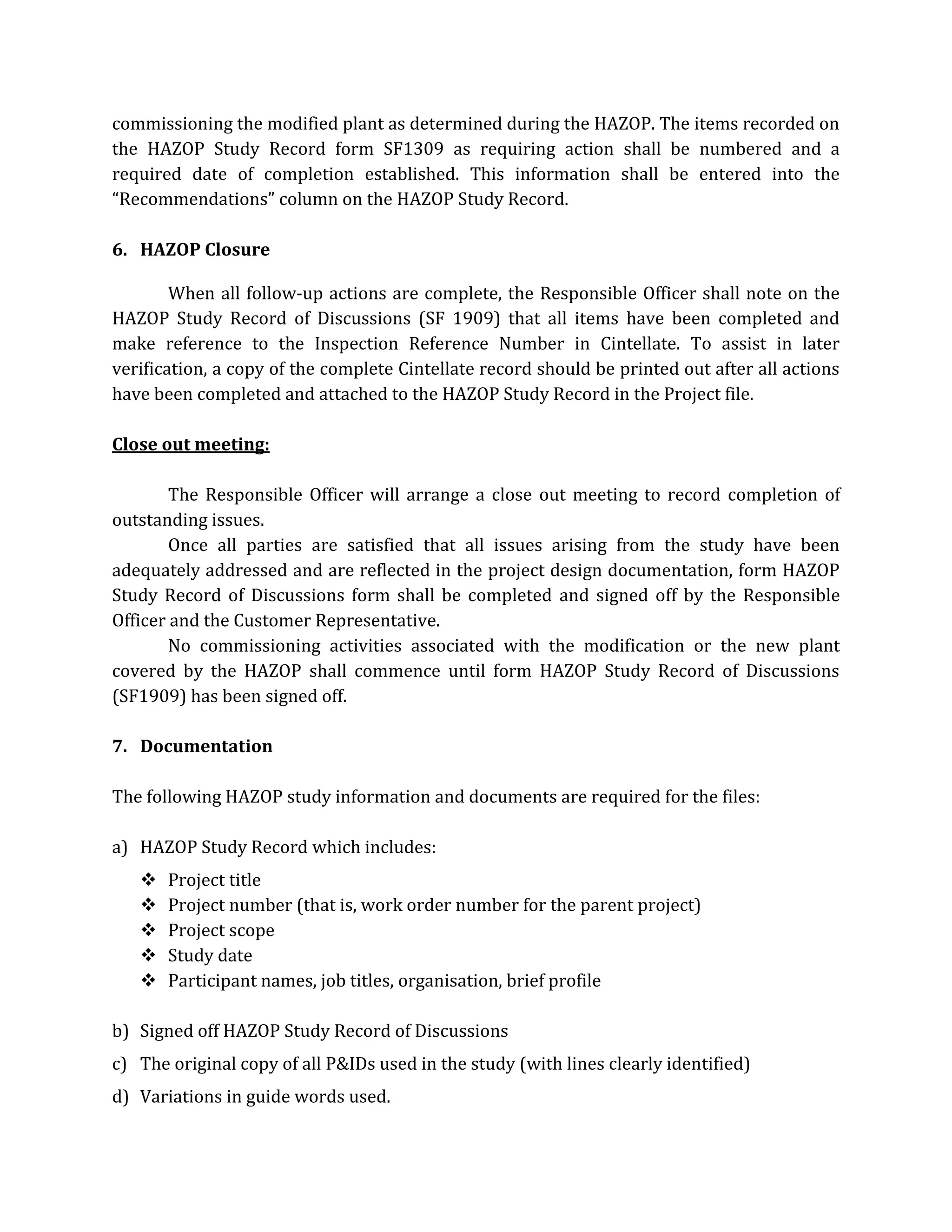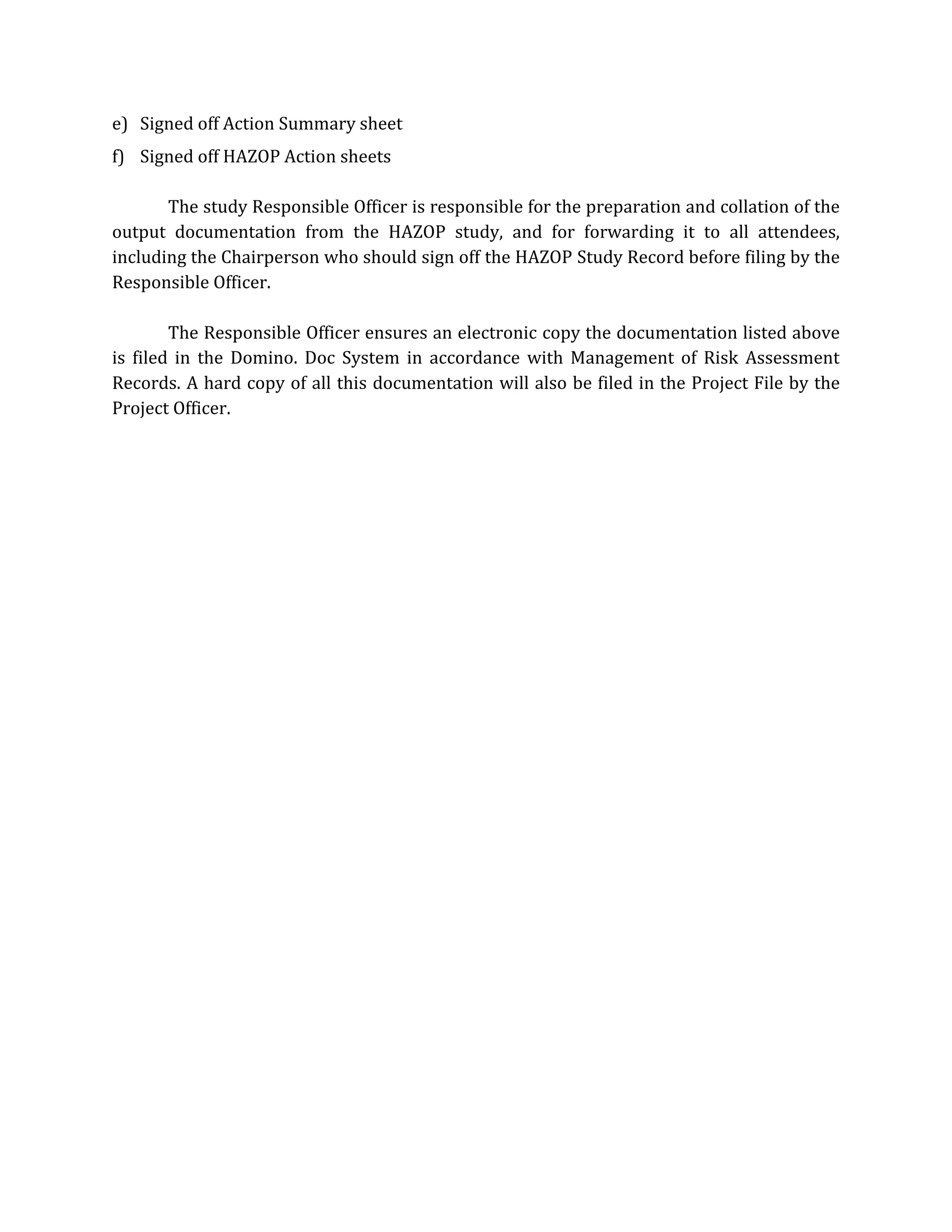A HAZOP (Hazard and Operability) study is a systematic technique used to identify potential hazards and operability problems in processes. It involves a team reviewing a process and its design to identify possible deviations from safe operation. The document outlines the HAZOP process including preparation, terminology, meeting procedures, follow up actions and documentation. Key aspects include selecting a team with relevant expertise, gathering process information, using guide words to identify deviations, assessing risks, recommending safeguards, and documenting actions.
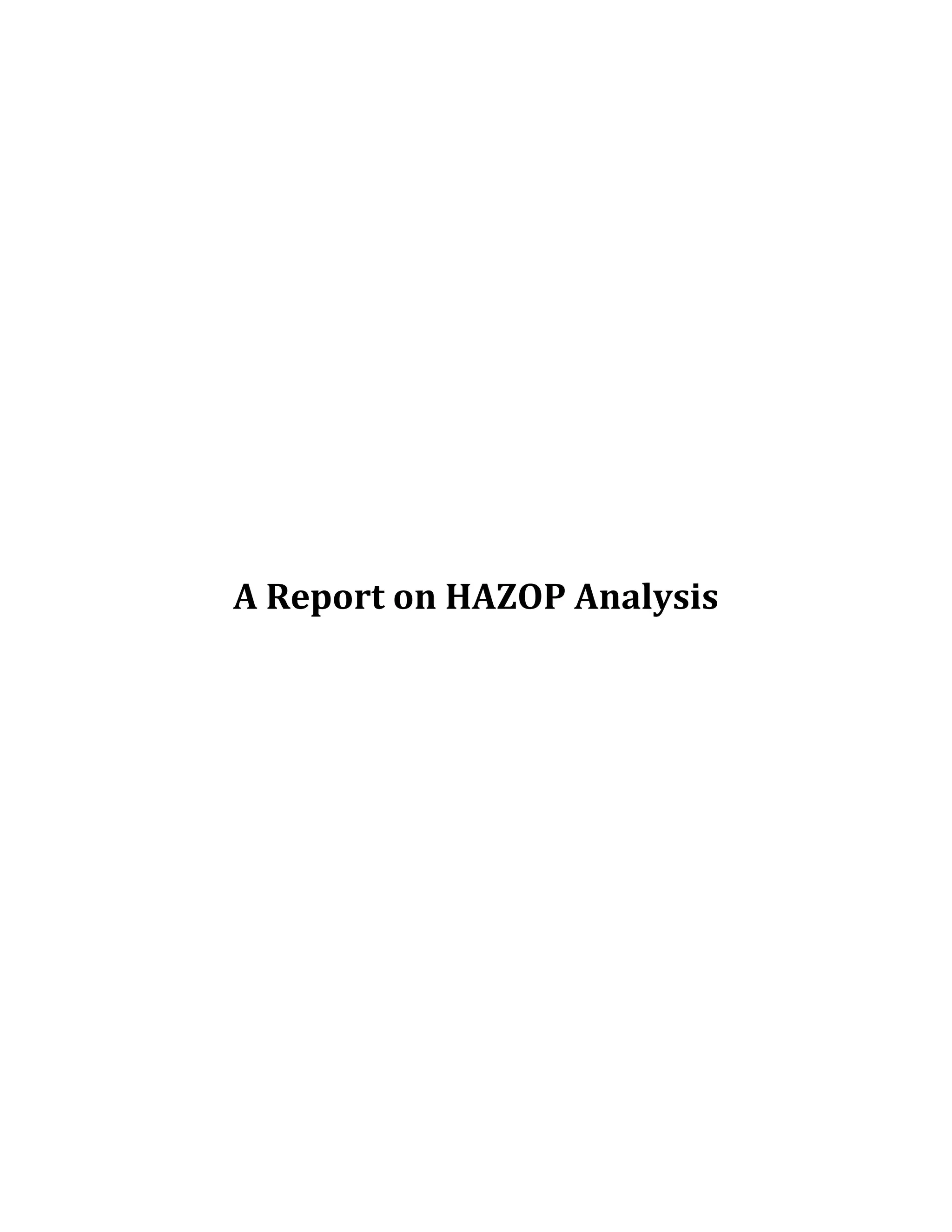
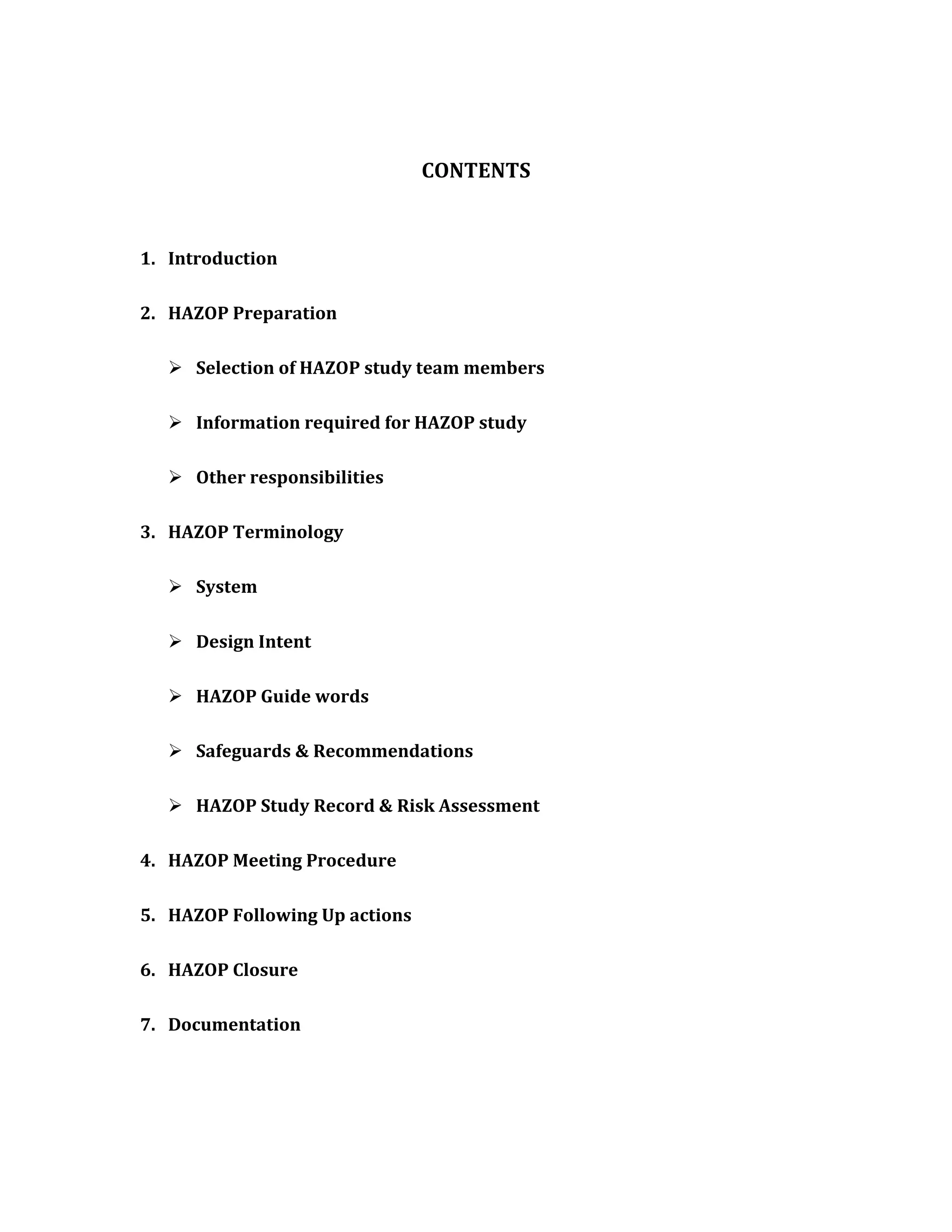
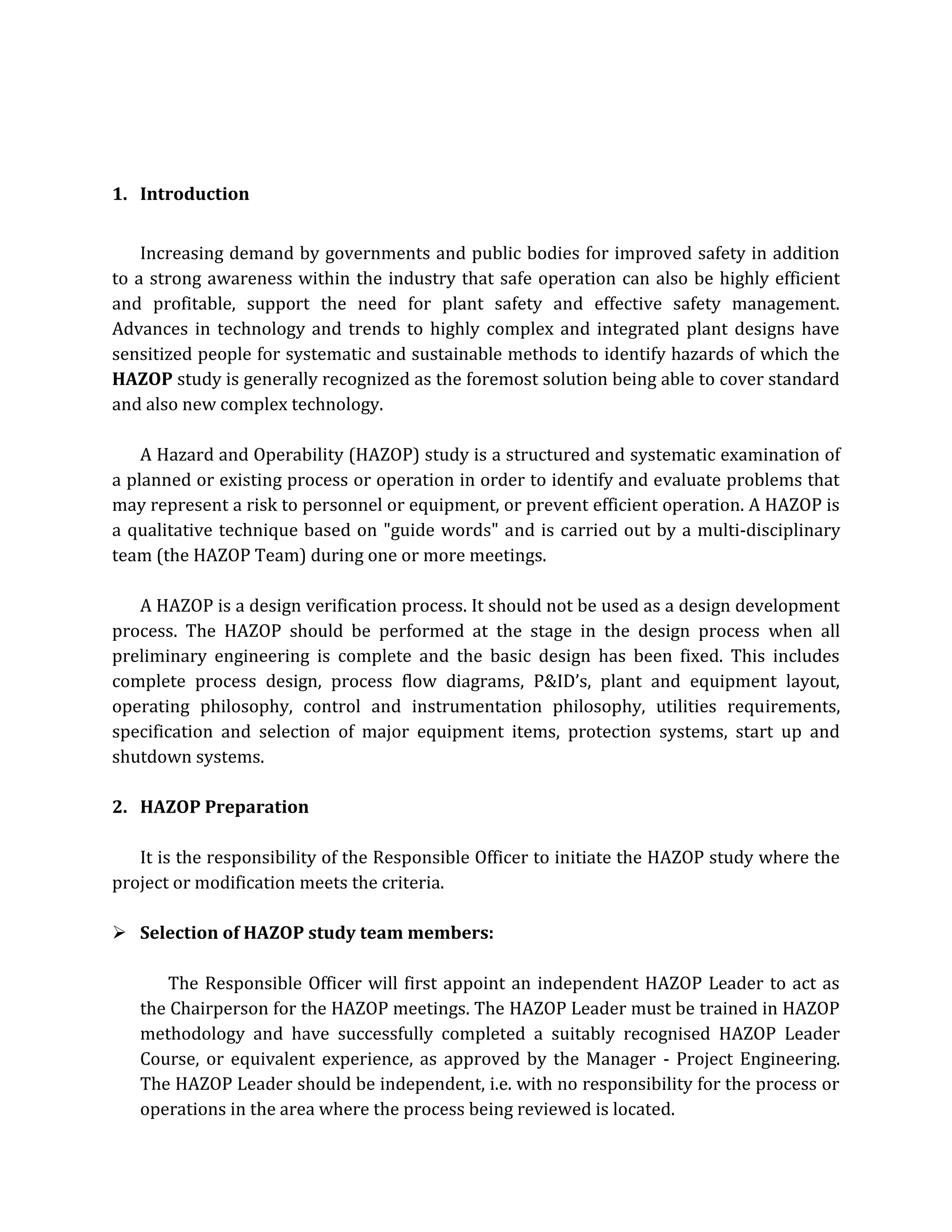
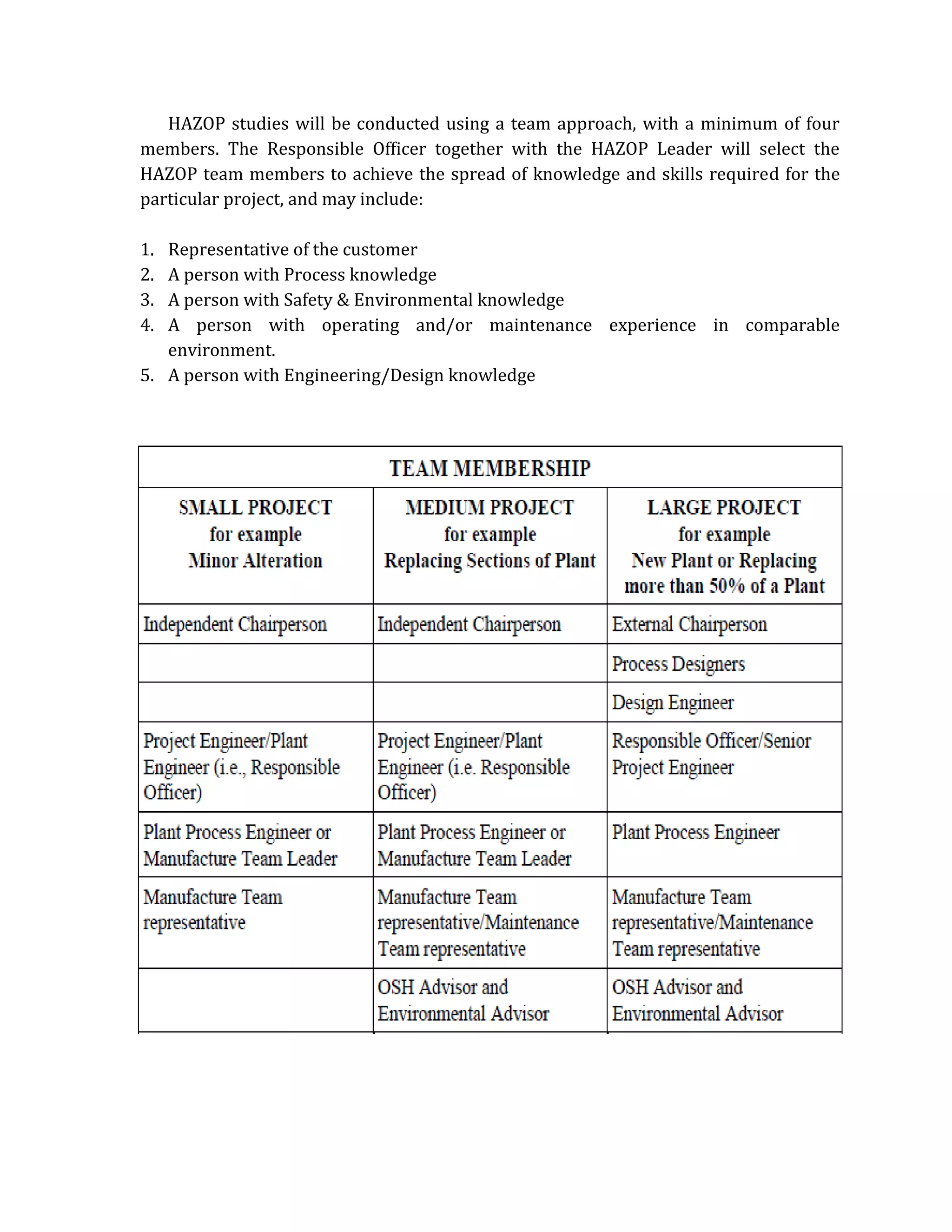
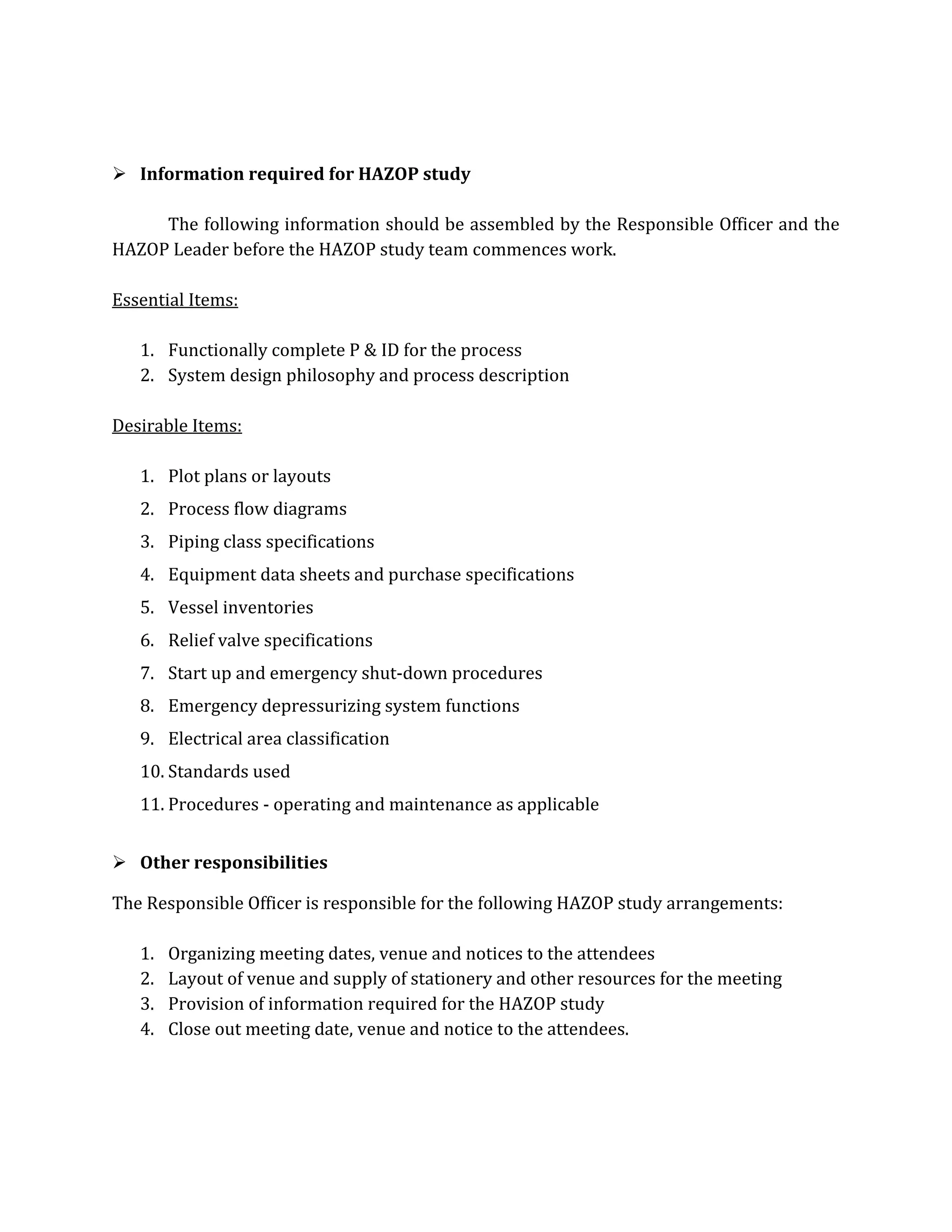
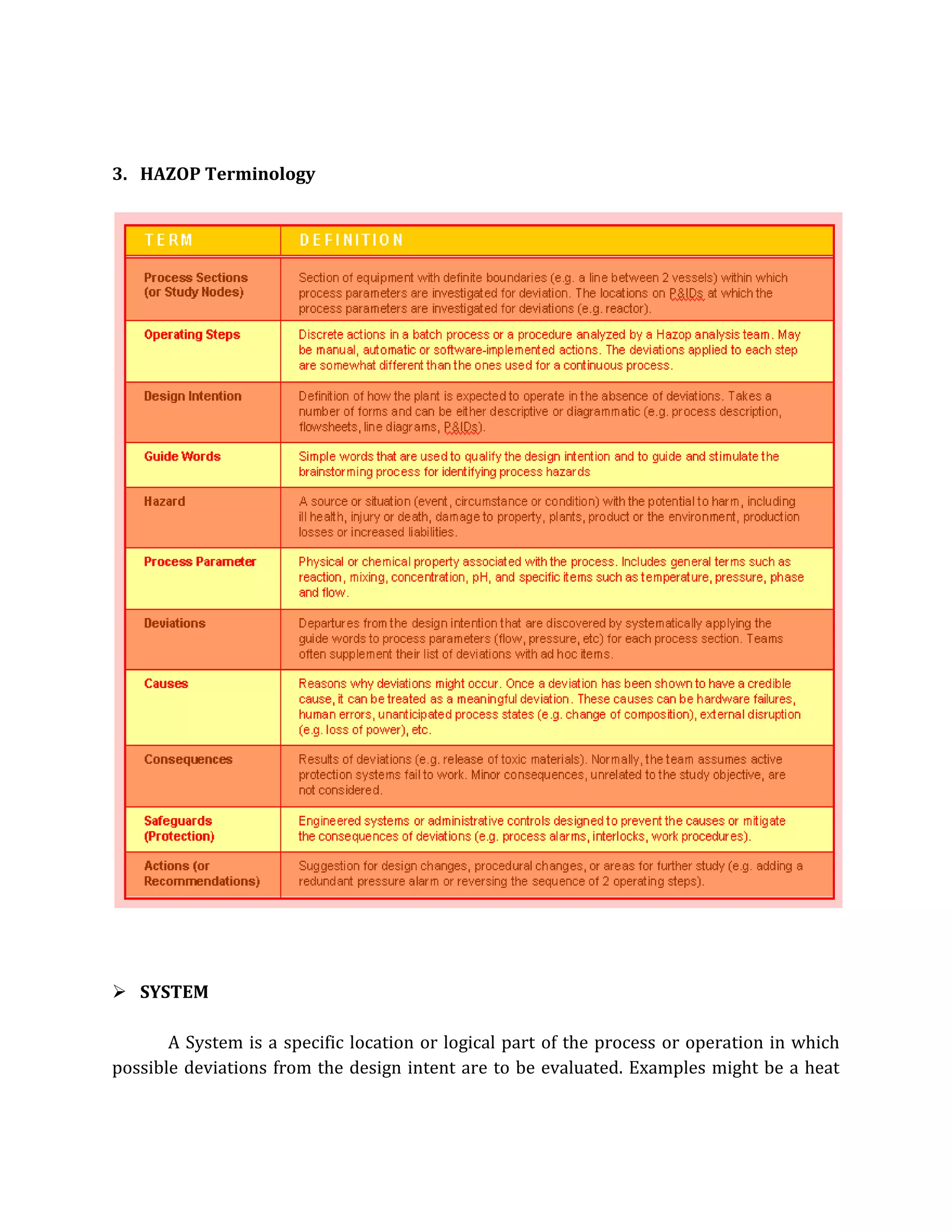

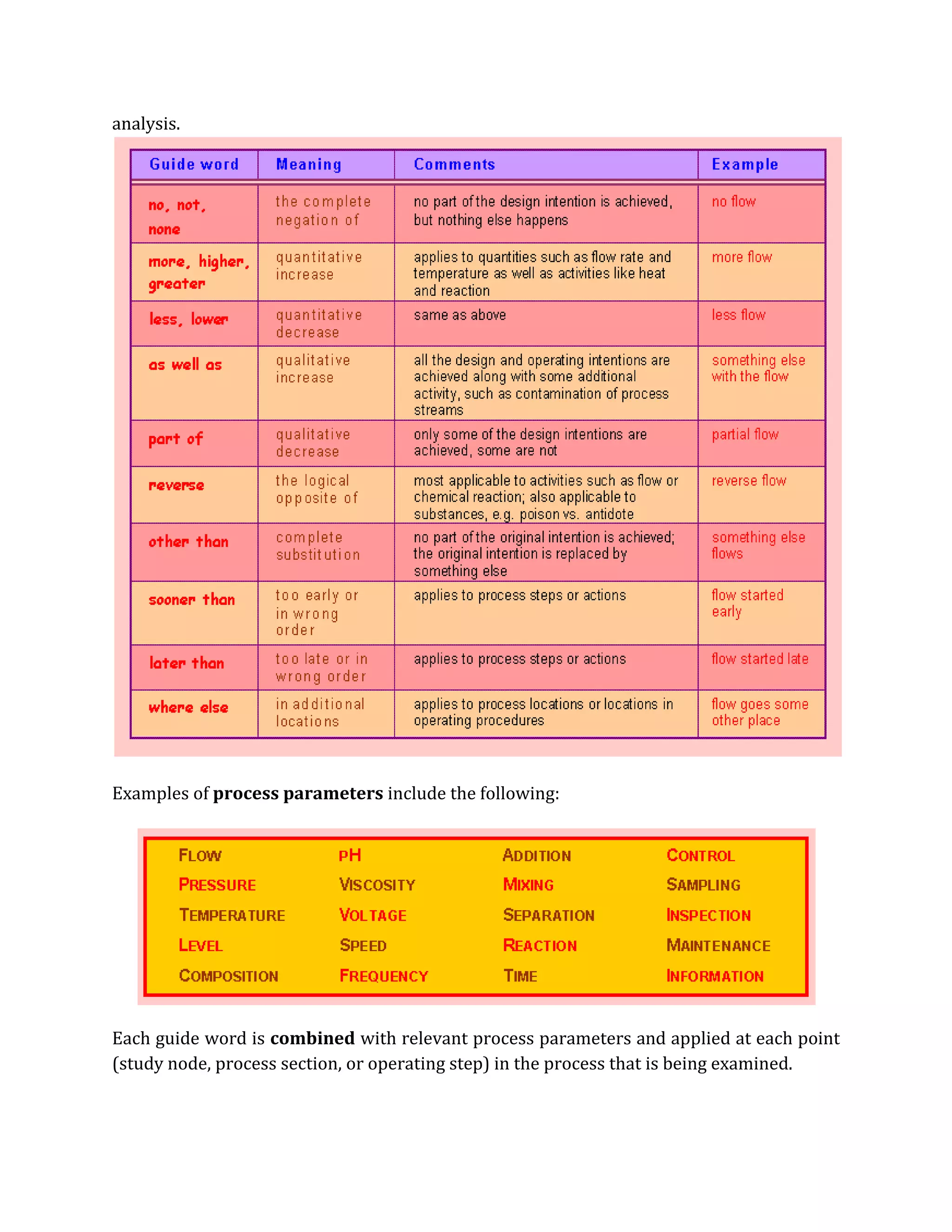
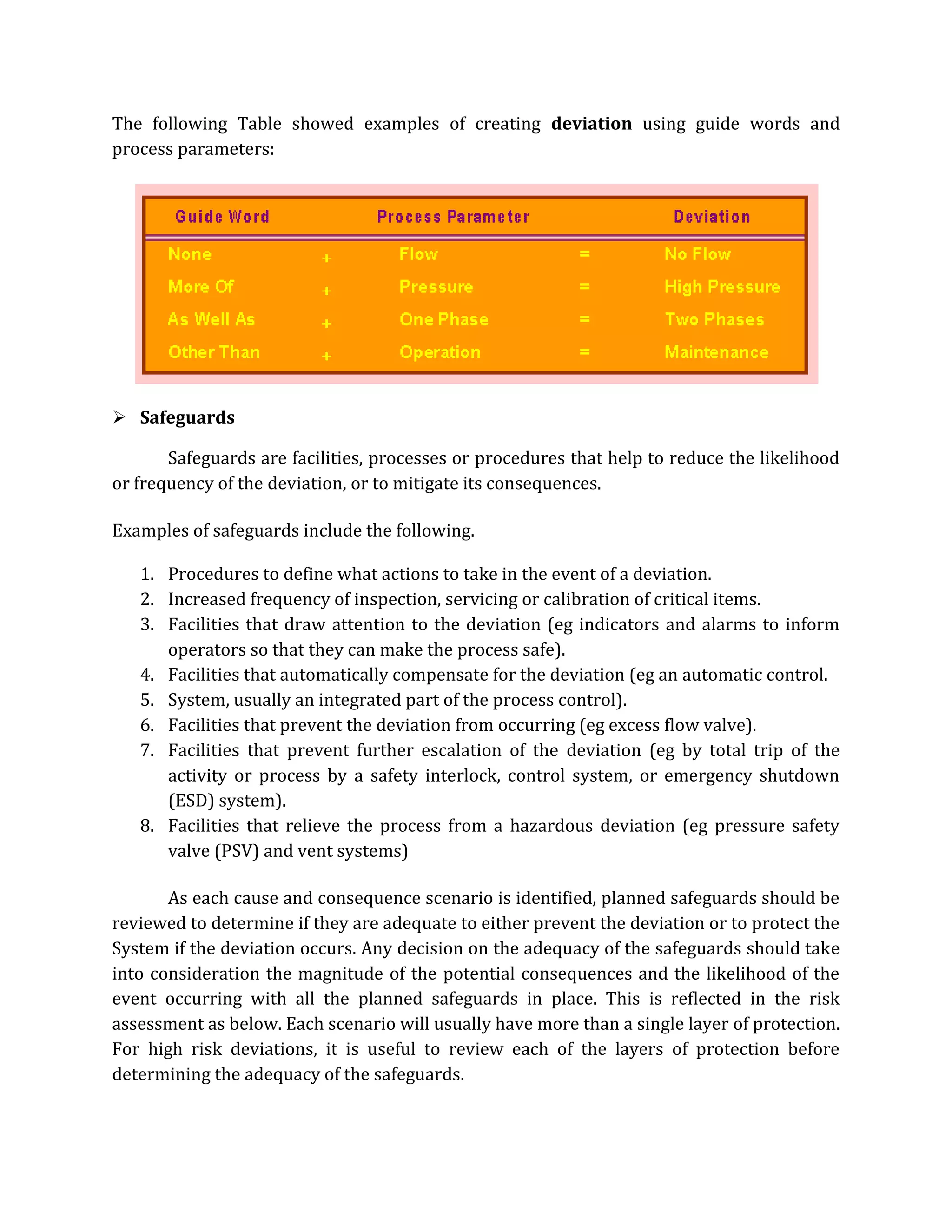
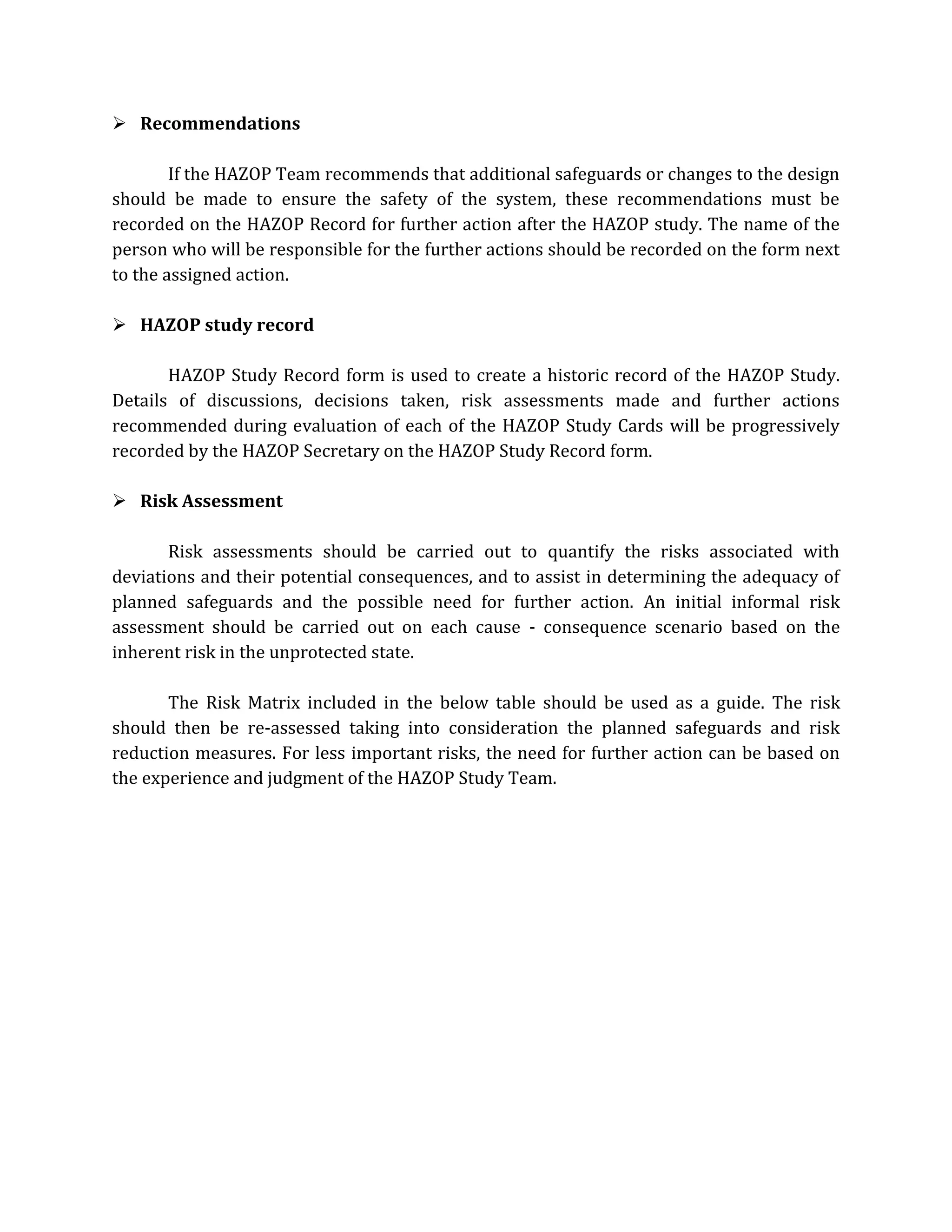

![safeguards are in place, the risk of an unwanted event occurring is reduced to an acceptable
level, then no further action is required.
For extreme risk scenarios, the adequacy of safeguards and the need for further
action should be quantitatively assessed using higher level risk assessment techniques
such as Layer of Protection Analysis (LOPA), or Safety Integrity Level (SIL) analysis. The
risk assessment process and outcome should be recorded on the HAZOP Study Record form
against each item.
4. HAZOP Meeting Procedure
At the HAZOP meeting, the HAZOP Leader will act as Chairperson to lead the team
through each of the following steps.
a) Introduce the project:
Ensure all team members are familiar with the HAZOP process
Define the project for the team
Review the proposed process or modification using the Process and
Instrumentation Diagram (P&ID) and describe its operation
On the P&ID, divide the process to be studied into logical Systems.
b) Carry out HAZOP Study:
Select a particular System for detailed review and describe the design intent for that
System. Work through the guide words on the HAZOP Study Cards, following the
HAZOP Process Flow Chart.
For each guide word, establish if the deviation from normal conditions suggested by
the guide word could occur. If the deviation could occur, identify the possible causes
of the deviation.
Determine the possible consequences or problems if the deviation occurred.
Carry out an initial assessment of the risk associated with the identified
consequences Review any proposed safeguards to prevent or mitigate the
consequences.
Evaluate if the proposed safeguards adequately reduce the risk to an acceptable
level and if not, suggest further actions having regard to the consequences and the
safeguards already proposed.
Repeat procedure from [step (a)] above for the next System. Progressively complete
HAZOP Study Record form including recording of further actions.](https://image.slidesharecdn.com/hazopanalysiscompletereport-140422013331-phpapp01/75/Hazop-analysis-complete-report-12-2048.jpg)
